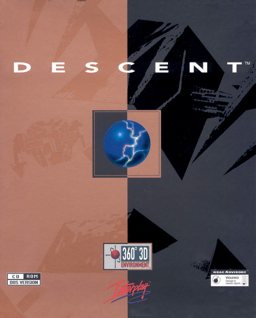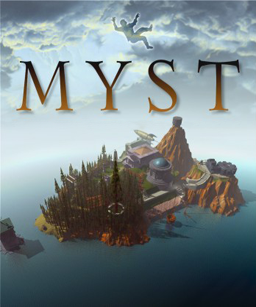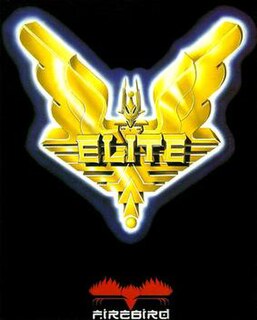Related Research Articles

Asteroids is a space-themed multidirectional shooter arcade game designed by Lyle Rains, Ed Logg, and Dominic Walsh and released in November 1979 by Atari, Inc. The player controls a single spaceship in an asteroid field which is periodically traversed by flying saucers. The object of the game is to shoot and destroy the asteroids and saucers, while not colliding with either, or being hit by the saucers' counter-fire. The game becomes harder as the number of asteroids increases.

The Atari Jaguar is a home video game console that was developed by Atari Corporation and originally released in North America in November 1993.

The Nintendo 64 (officially abbreviated as N64, hardware model number pre-term: NUS, stylized as NINTENDO64) is a home video game console developed and marketed by Nintendo. Named for its 64-bit central processing unit, it was released in June 1996 in Japan, September 1996 in North America, and March 1997 in Europe and Australia. It was the last major home console to use the cartridge as its primary storage format until the Nintendo Switch in 2017. The Nintendo 64 was discontinued in 2002 following the launch of its successor, the GameCube, in 2001.

The PlayStation is a home video game console developed and marketed by Sony Computer Entertainment. It was first released on 3 December 1994 in Japan, on 9 September 1995 in North America, on 29 September 1995 in Europe, and on 15 November 1995 in Australia, and was the first of the PlayStation lineup of video game consoles. As a fifth generation console, the PlayStation primarily competed with the Nintendo 64 and the Sega Saturn.

The Compact Disc-Interactive is a digital optical disc data storage format that was mostly developed and marketed by Dutch company Philips. It was created as an extension of CDDA and CD-ROM and specified in the Green Book, co-developed by Philips and Sony, to combine audio, text and graphics. The two companies initially expected to impact the education/training, point of sale, and home entertainment industries, but CD-i eventually became best known for its video games.

The 3DO Interactive Multiplayer, often called the 3DO, is a home video game console developed by The 3DO Company. Conceived by entrepreneur and Electronic Arts founder Trip Hawkins, the 3DO was not a console manufactured by the company itself, but a series of specifications, originally designed by Dave Needle and R. J. Mical of New Technologies Group, that could be licensed by third parties. Panasonic produced the first models in 1993, and further renditions of the hardware were released in 1994 by GoldStar and in 1995 by Sanyo.
Sierra Entertainment, Inc. was an American video game developer and publisher. Founded in 1979 as On-Line Systems, by Ken and Roberta Williams, Sierra is known primarily for its graphic adventure game series such as King's Quest, Space Quest, Police Quest, Gabriel Knight, Leisure Suit Larry, and Quest for Glory.

WB Games Boston is an American video game developer. Turbine was founded as CyberSpace, Inc. in 1994, changing their company name in 1995 to Turbine Entertainment Software Corp. and in 2005 to Turbine, Inc.

Descent is a first-person shooter (FPS) game developed by Parallax Software and released by Interplay Productions in 1995 for MS-DOS, and later for Macintosh, PlayStation, and RISC OS. It popularized a subgenre of FPS games employing six degrees of freedom and was the first FPS to feature entirely true-3D graphics. The player is cast as a mercenary hired to eliminate the threat of a mysterious extraterrestrial computer virus infecting off-world mining robots. In a series of mines throughout the Solar System, the protagonist pilots a spaceship and must locate and destroy the mine's power reactor and escape being caught in the mine's self-destruction, defeating opposing robots along the way. Players can play online and compete in either deathmatches or cooperate to take on the robots.

Myst is a graphic adventure puzzle video game designed by the Miller brothers, Robyn and Rand. It was developed by Cyan, Inc., published by Brøderbund, and initially released for the Macintosh personal computer platform in 1993. In the game, players travel via a special book to the island of Myst. There, players solve puzzles and, by doing so, travel to four other worlds, known as Ages, which reveal the backstory of the game's characters.

Elite is a space trading video game. It was written and developed by David Braben and Ian Bell and originally published by Acornsoft for the BBC Micro and Acorn Electron computers in September 1984. Elite's open-ended game model and revolutionary 3D graphics led to it being ported to virtually every contemporary home computer system and earned it a place as a classic and a genre maker in gaming history. The game's title derives from one of the player's goals of raising their combat rating to the exalted heights of "Elite".

World of Warcraft (WoW) is a massively multiplayer online role-playing game (MMORPG) released in 2004 by Blizzard Entertainment. It is the fourth released game set in the Warcraft fantasy universe. World of Warcraft takes place within the Warcraft world of Azeroth, approximately four years after the events at the conclusion of Blizzard's previous Warcraft release, Warcraft III: The Frozen Throne. The game was announced in 2001, and was released for the 10th anniversary of the Warcraft franchise on November 23, 2004. Since launch, World of Warcraft has had eight major expansion packs produced for it: The Burning Crusade, Wrath of the Lich King, Cataclysm, Mists of Pandaria, Warlords of Draenor, Legion, Battle for Azeroth, and Shadowlands.
Ocean Software Ltd, commonly referred to as Ocean, was a British software development company, that became one of the biggest European video game developers and publishers of the 1980s and 1990s.
1994 has seen many sequels and prequels in video games and several new titles such as Super Metroid, Donkey Kong Country and Sonic & Knuckles.

Tempest 2000 is a tube shooter video game originally developed by Llamasoft and published by Atari Corporation for the Atari Jaguar in North America on 13 April, 1994. It was later released in Europe on 27 June of the same year and finally in Japan on 15 December of the same year as well, where it was published by Mumin Corporation. It is a remake by Jeff Minter of Dave Theurer's 1981 arcade game Tempest, which used Atari's QuadraScan vector color display technology.

Phantasmagoria is a point-and-click adventure horror video game designed by Roberta Williams for MS-DOS and Microsoft Windows and released by Sierra On-Line on August 24, 1995. It tells the story of Adrienne Delaney, a writer who moves into a remote mansion and finds herself terrorized by supernatural forces. It was made at the peak of popularity for interactive movie games and features live-action actors and footage, both during cinematic scenes and within the three-dimensionally rendered environments of the game itself. It was noted for its violence and sexual content.

Crash 'n Burn is a futuristic racing/shooter video game developed by Crystal Dynamics and released for the 3DO in 1993. The game was the launch title for the system and was included as a pack-in game with Panasonic's original 3DO console.

Disney's Animated Storybook is a point-and-click adventure interactive storybook video game series based on Walt Disney Feature Animation and Pixar films that were released throughout the 1990s. They were published by Disney Interactive for personal computers for children ages 4 to 8 years old. Starting in 1994, most entries in the series were developed by Media Station. They have the same plots as their respective films, albeit abridged due to the limited medium. The games have hundreds of clickable hotspots that produced animated gags, as well as many mind-challenging interactive games.
Madeline is a series of educational point-and-click adventure video games which were developed during the mid-1990s for Windows and Mac systems. The games are an extension of the Madeline series of children's books by Ludwig Bemelmans, which describe the adventures of a young French girl. The video-game series was produced concurrently with a TV series of the same name, with characters and voice actors from the show.

Vid Grid is a tile-matching full motion video puzzle game originally developed by Geffen Records and published by Jasmine Multimedia Publishing for Windows on September 13, 1994. It was later ported to the Atari Jaguar CD by High Voltage Software in 1995, where it was included alongside with Blue Lightning as one of the pack-in games for the peripheral when it launched. It is the first entry in the franchise of the same name.
References
- ↑ The Scientist, Volume 8. Institute for Scientific Information. 1994. p. 4. Retrieved 19 June 2015.
- ↑ Astronomica: The Quest for the Edge of the Universe – Box Scan, GameSpot, 4 June 2018
- ↑ Billboard May 13, 1995 (Edutainment). Billboard. 1995. p. 94. Retrieved 19 June 2015.
- ↑ Children's Software Revue, Volumes 1-4. Active Learning Associates. 1993. p. 17. Retrieved 19 June 2015.
- ↑ Neville, Ken. "Astronomica (review)". Entertainment Weekly. Retrieved 19 June 2015.
- ↑ Stolz, Craig (April 26, 1995). "The Shock of the Newbie". The Washington Post (subscription required). Archived from the original on April 15, 2016. Retrieved 19 June 2015.
- ↑ Keizer, Gregg (December 1, 1994). "Hot stuff for the holidays. (brief reviews of multimedia hardware and software products) (Hardware Review) (Multimedia Direct) (Evaluation)". Computer Shopper (subscription required). Archived from the original on April 14, 2016. Retrieved 19 June 2015.